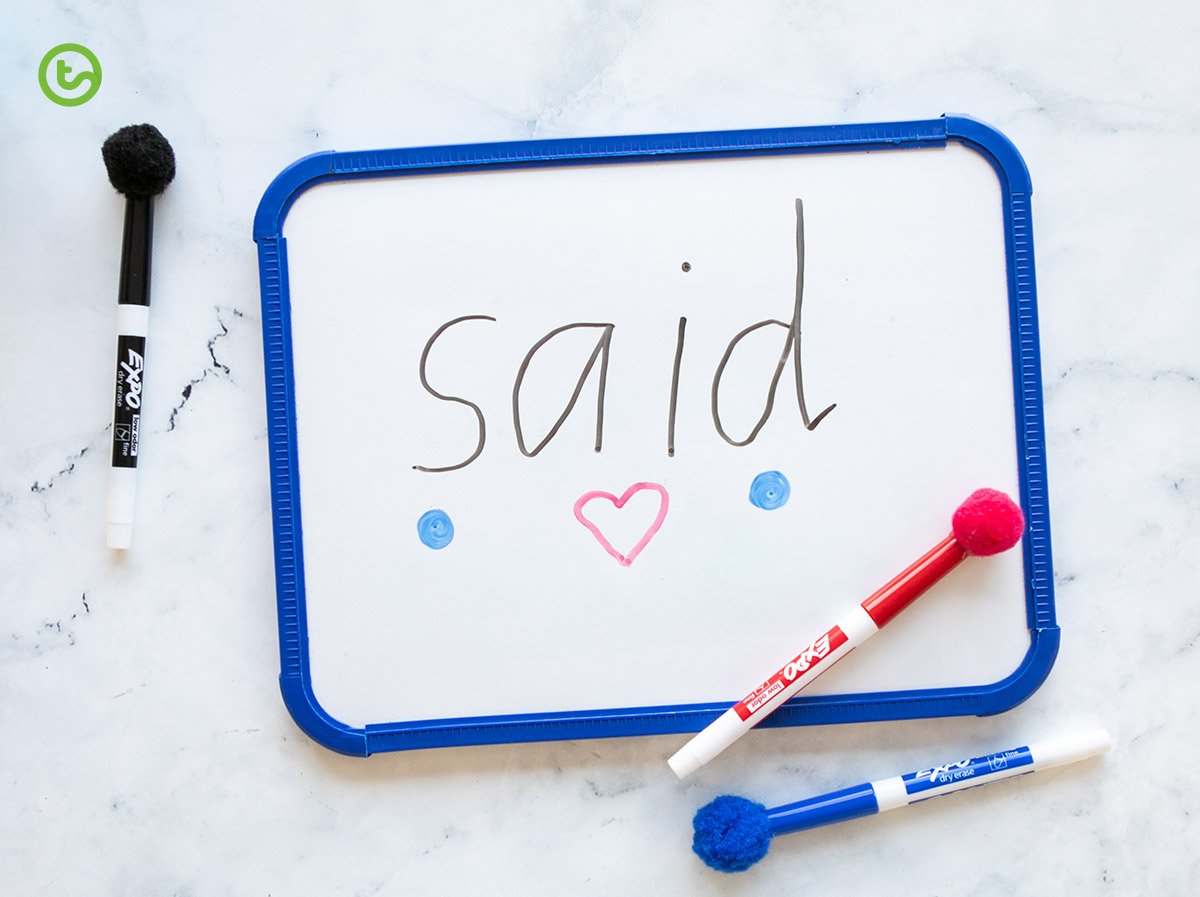The debate over the teaching and learning of sight words has been raging in the teaching profession for some time now. A teacher using sight words with no issues may look at you strangely if you suggest another method. However, with the addition of the Science of Reading research and best practice for teaching kids to read, cognitive scientists have put a lens on how children learn to read. It is this research that has again brought up sight word practice in the classroom. But, it’s important to departmentalise what the research is saying! You don’t have to get rid of the teaching and learning of sight words, it’s the way we teach these words to our early readers that matters.
In this blog, I attempt to bridge the gap between the research and the realities of the classroom. Then, we take a look at heart words, a new strategy teachers are implementing to help students learn and memorise those tricky words.
Sight Words vs Heart Words
Have you ever really focused on how quickly you can read through words on a page? It almost becomes ingrained in us – we certainly don’t sit there and ‘sound out’ every word! As we become skilled readers, our ability to instantly and accurately recognise words increases significantly compared to our beginning readers. In fact, we start to recognise words, such as ‘chair’ even faster than we can process a picture of a chair. This all happens through a process called ‘orthographic mapping’. Orthographic mapping is how we take an unfamiliar word and immediately turn it into a word we recognise and store away for later.
Dr. David Kilpatrick is an internationally renowned cognitive psychologist and author of the book Equipped for Reading Success, A book designed to summarise the research in a clear and easy-to-read manner. He believes that ‘good mappers’ need to develop three skills:
- Automatic letter-sound associations
- Highly proficient phoneme awareness
- Word study
In many classrooms, the sight word model relies on memorisation of the whole word – hoping that repeated drills using flashcards will help early readers develop a bank of high-frequency words. However, science is now telling us that we need to integrate the learning of these ‘sight’ words into our phonics lessons. It’s about explicitly teaching our young readers how to connect phonemes (sounds) to a written word.
Now, past me is saying – ‘But, traditional sight words aren’t easily decodable’. This is accurate, however, when following the orthographic mapping sequence, these words still need to be broken down into letter-sound associations and any irregular spellings need to be learnt by heart. Hence the term heart words.
What are heart words?
Heart words are a strategy to help your students memorise irregular parts of a sight word rather than the whole word. The words are often explicitly taught with a little heart above the part of the word that they need to learn ‘by heart’.
The word ‘said’ is a great example of how this strategy is taught to young readers. They can sound out the first sound /s/ and the last sound /d/ however the /ai/ letter combination is not easily decoded so would need to be learnt by heart, hence the little red hearts under these letters.

This is a fantastic YouTube video where Christina explains the heart word method and an example of how you would introduce these words.
Heart Word Activities
Remember, the research isn’t saying NOT to teach our kids these words – it’s the explicit instruction that occurs first and the process we follow to assist with orthographic mapping that is important. You may like to draw a little heart above the letters or string of letters in each of the words that they need to learn by heart. This gives students a great visual cue that the word they are learning has a tricky part.
- They can have a go at writing the word themselves on mini whiteboards and drawing the heart above the tricky part.
- Have them do some air/sky writing of the word in the air.
- Talk about how you would use the word in a sentence.
- Have them write the word using chalk on some cement outside the classroom.
- Use sound boxes to break the word into its phonemes.
- Have students use playdough buttons to segment and blend the sounds.
Want more?
Do you want to read more about the Science of Reading research? We have a number of other blogs and a podcast that explains a variety of components in teacher-friendly language!
[resource:4424346][resource:4637234][resource:4515497][resource:4466268]







Or we could stop simplifying things that don't need simplifying and teach the IPA. A
Thanks for your suggestion, Kerry-Lee. We like to explore all avenues of current best practice. Have an excellent week.
Is photo of the word 'said' as a heart word on the whiteboard photograph associated with the article misrepresenting the article message and video? said - ai making /e/ is representing one sound so should it be one heart for the phoneme?
Hi Sophia! Thanks so much for your comment. When we were researching all about this strategy - there were both the hearts for each letter that needed to be learnt off by heart, as well as just the one heart if it was more than one letter but one grapheme. We decided to include both examples, however, after your comment and a few others - we tend to agree with the one heart for the one sound (particularly with the example of 'said'). We have changed the images in the blog to reflect this thought. Thank you so much again for your comment. It's certainly a process of learning and we love sharing this evidence-based research with our wonderful readers! Have a lovely day - Holly